Israel, Jordan and the Palestinian Authority signed trilateral Red Sea-Dead Sea pipeline plan on Dec. 9th 2013, at the headquarters of the World Bank. The ambitious and contested 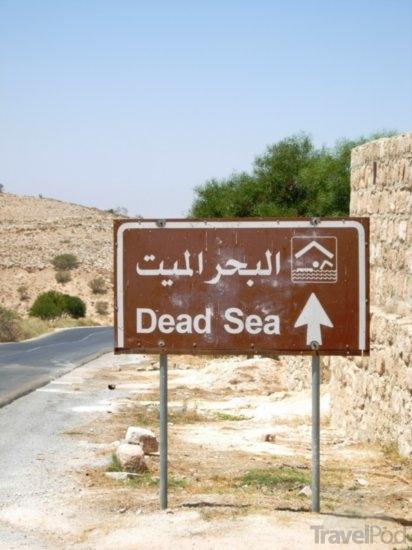
Israel’s energy and infrastructure minister, Silvan Shalom, said it was “a historic agreement that realises a dream of many years… [and] is of the highest diplomatic, economic, environmental and strategic importance.” He and the Palestinian and Jordanian water ministers, Shaddad Attili and Hazem al-Nasser, attended a signing ceremony in Washington.
Located in the Jordan rift valley bordering Jordan to the east, and Israel and Palestine to the west, the Dead Sea is served only by the Jordan River to the North. The water level in the Dead Sea dropped from 390 metres below sea level in the 1960s to 420 metres below sea level at present and will be 450 metres below sea level by 2040. The water surface area has shrunk by a third, from 950 square kilometres to 637 square kilometres.
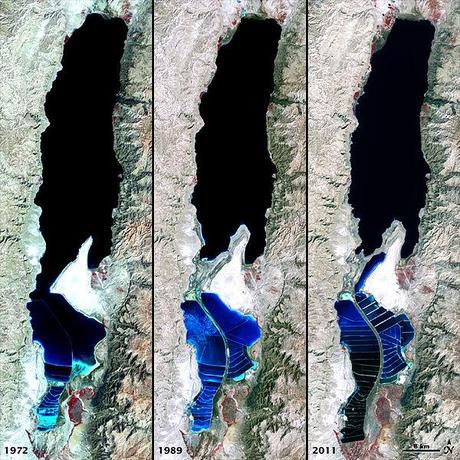
Red Sea-Dead Sea Pipeline Plan
According the agreed plan of pumping water from the one sea to the other – a project known as the Red-Dead Conduit, or Two Seas Canal – will help to slow the dessication of the Dead Sea, which is famous for its high levels of salt and other minerals that allow bathers to float on its surface. “The inflow of water from the Red Sea will slow the drying up of the Dead Sea,” said the Israeli government. Approximately 200 million cubic meters of water will be drawn per annum. Around 80 million cubic meters will be desalinated at a facility to be built in Aqaba facility with Israel receiving 30-50 million cubic meters of water for the Arava region and Eilat, and with Jordan receiving 30 million cubic meters of water for use in the south. Israel will also sell Jordan another 50 million cubic meters of water from the Kinneret for use in the north. The other goals of this project are the generation of electricity by utilizing the difference in elevation between the Red Sea and the Dead Sea and the development of tourism infrastructures.
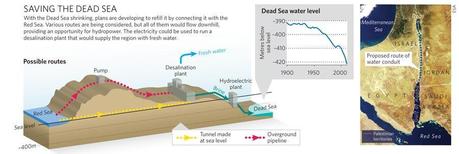
Red Sea – Dead Sea Pipeline. Images courtesy of ESA.
“With no action, the sea level is expected to drop by another 150 meters until it will stabilize as a much smaller water body at a level of about 543 meters below sea level by the mid-22nd century,” the World Bank’s January 2013 report explained. Water loss in the Dead Sea has already resulted in dangerous sinkholes, mudslides and landslides in the area and threatens the habitat of many species native to the region.
While the plan is accepted by respective international authorities there is also critics inside Israeli regime. Regional environmental group Friends of the Earth Middle East and the Environmental Protection Ministry have slammed the plan as destructive to the very sea that it aims to save. The Environmental Protection Ministry likewise announced its rejection of the Red-Dead program, stressing that without more informed data and experimentation, such a plan cannot proceed. Citing experts from the Geological Survey of Israel, the ministry said that pumping more than 350 million cubic meters of seawater and brine to the Dead Sea could lead to an outbreak of bacteria and algal growth, causing disturbing odors in the region. Some environmentalists argue that the introduction of Red Sea water containing living organisms could have a catastrophic effect on the unique characteristics of the Dead Sea.
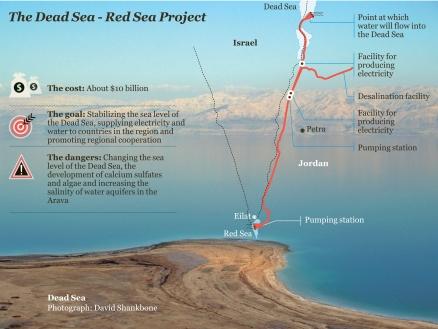
Blue Peace
The Red-Sea-Dead-Sea pipeline in one of the key recommendations advocated in a report Blue Peace: Rethinking Middle East Water. As water resources in the Middle East should be considered as a potential source of socioeconomic development and peace, a group of independent Indian experts, the Strategic Foresight Group (SFG), was mandated by Switzerland and Sweden - the Swiss Agency for Development Cooperation and the Swedish International Development Cooperation Agency - to flank a process of reflection on this issue on 2009. A series of consultations and meetings took place in 2010, i.e., in Montreux (Switzerland), in Amman (Jordan), and in Sanliurfa (Turkey). The SFG then drew up the “Blue Peace” report based on these consultations, which in end effect brought together a good hundred of experts and leaders from the Middle East. On February 2011 the report was presented in Geneva.The report, prepared with support and input from almost 100 leaders and experts from Israel, the Palestine Territories, Jordan, Lebanon, Syria, Iraq and Turkey, also stated that water crisis can be converted into an opportunity for regional peace.
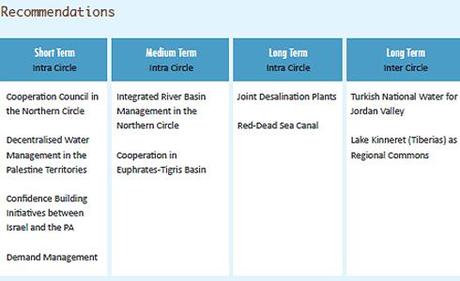
The Blue Peace essentially requires a comprehensive approach. This ”hydro-diplomacy” can be defined as “regional cooperation that creates dynamics of trans-boundary basin economic development through integrated water resources management.”It is necessary to act on several fronts at the same time, and yet it is possible to choose different entry points of intervention as per social and political dynamics. The report presents a roadmap for action beginning with efficient internal management, storage and distribution; the establishment of Cooperation Council for Water Resources for Iraq, Jordan, Lebanon, Syria and Turkey; and separately launching of a high level Confidence Building Initiative between Israel and the Palestinian Authority. This initiative’s key responsibility is to answer the specific challenges caused by the ongoing conflict between Israelis and Palestinians. This initiative’s key responsibility is to answer the specific challenges caused by the ongoing conflict between Israelis and Palestinians. As an example of successful cooperation, water management can also create the circumstances necessary for socioeconomic development and peace in these countries.
The Blue Peace – Rethinking Middle East Water: Complete report Download (PDF, 3128 KB) :
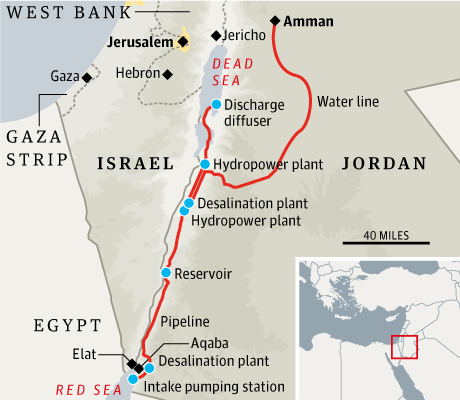
[en]

